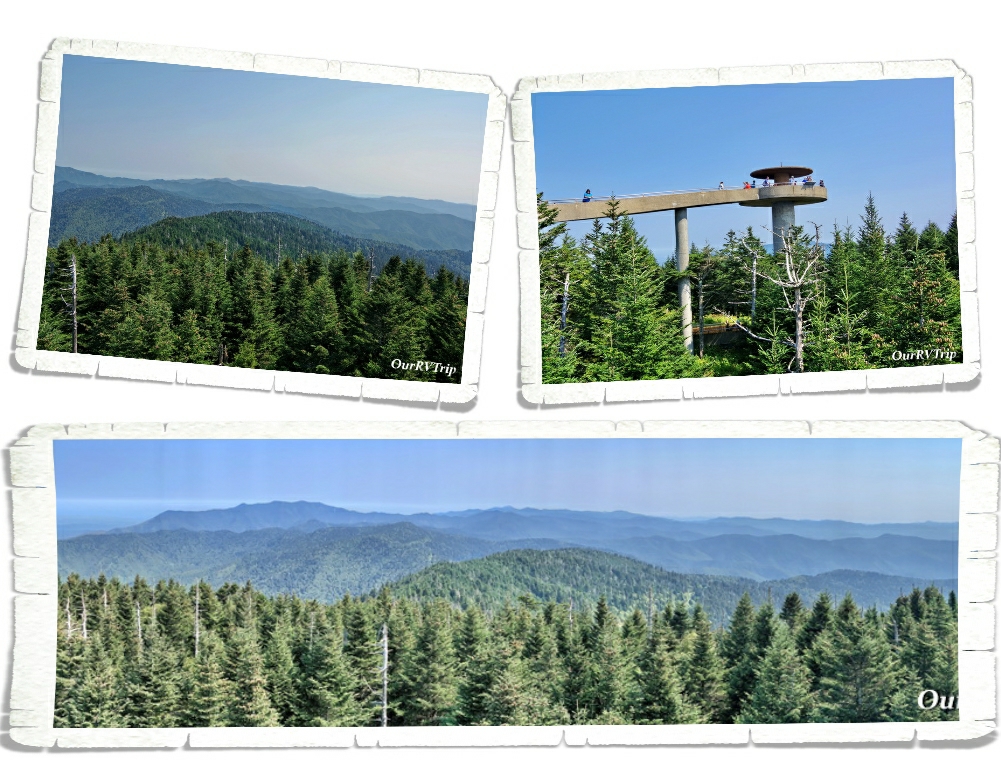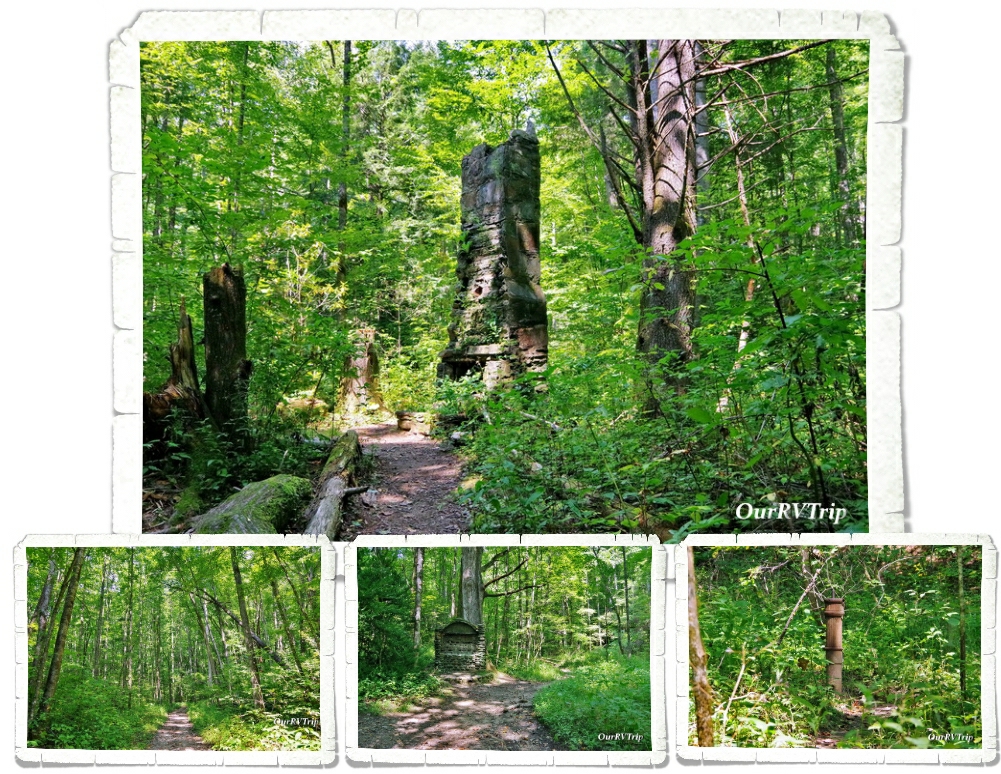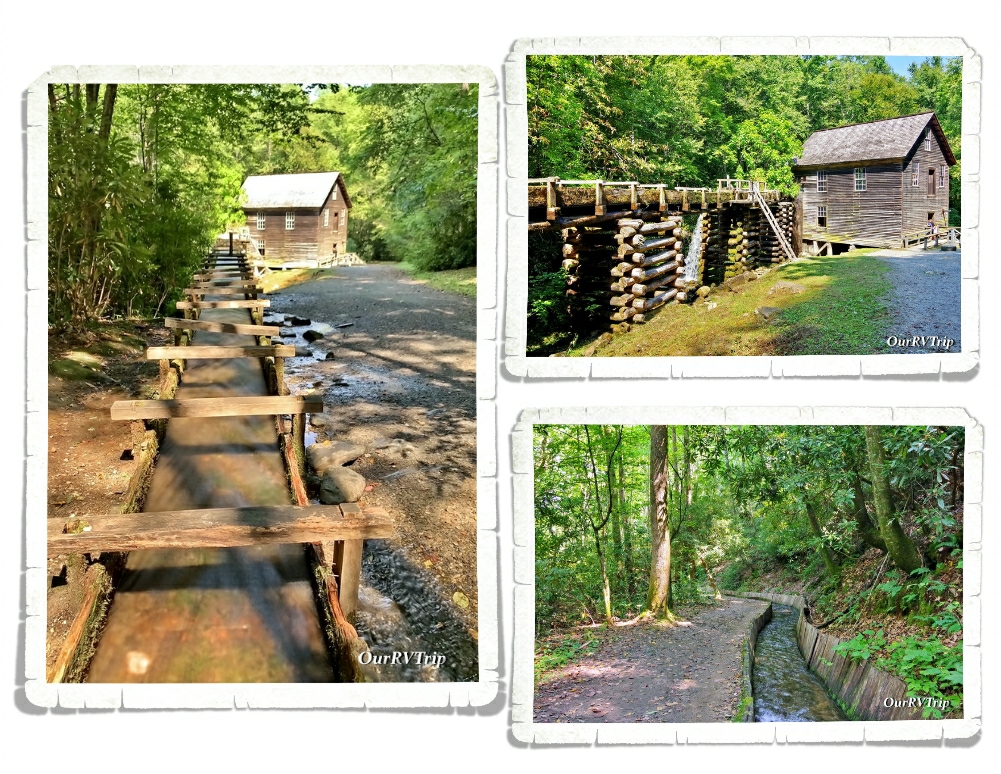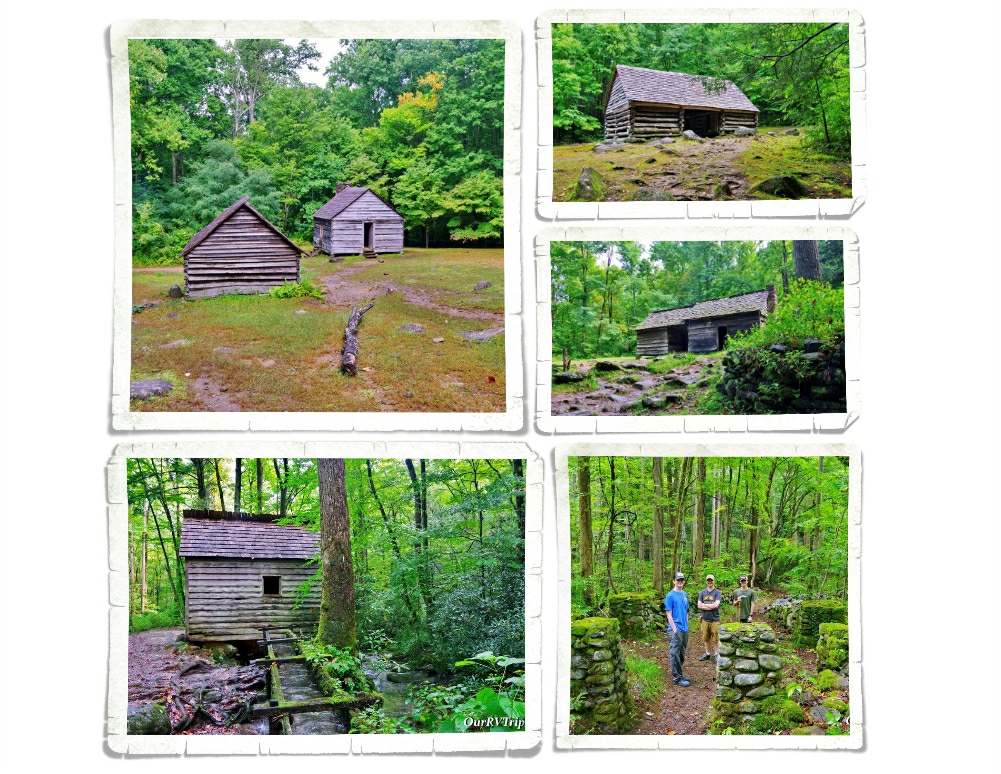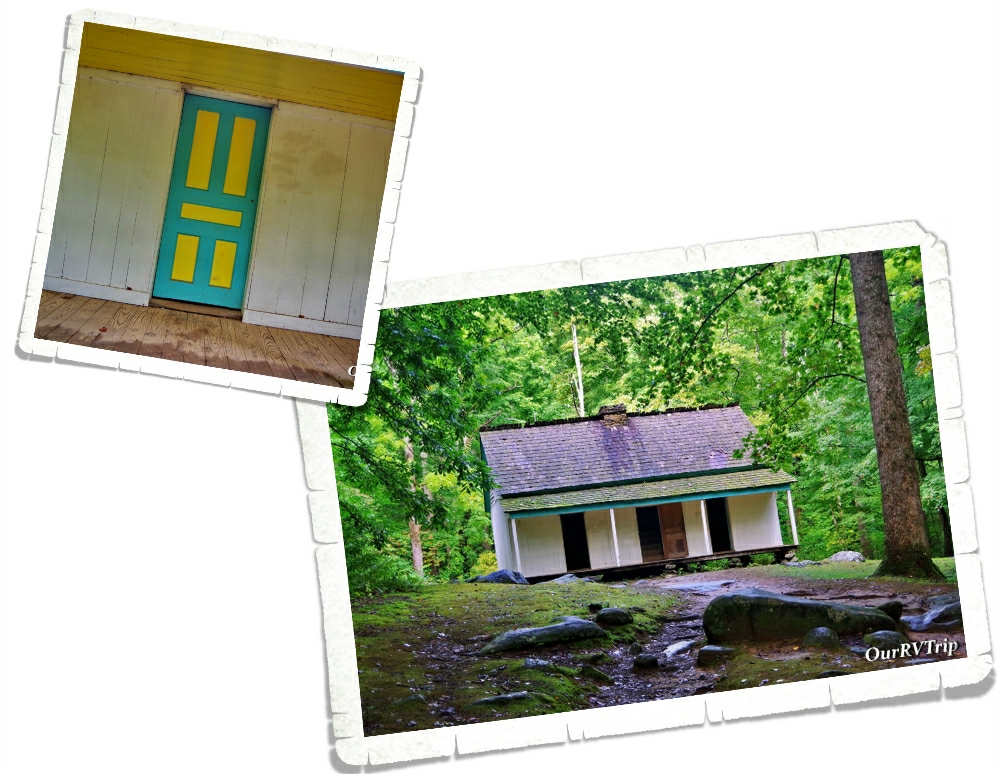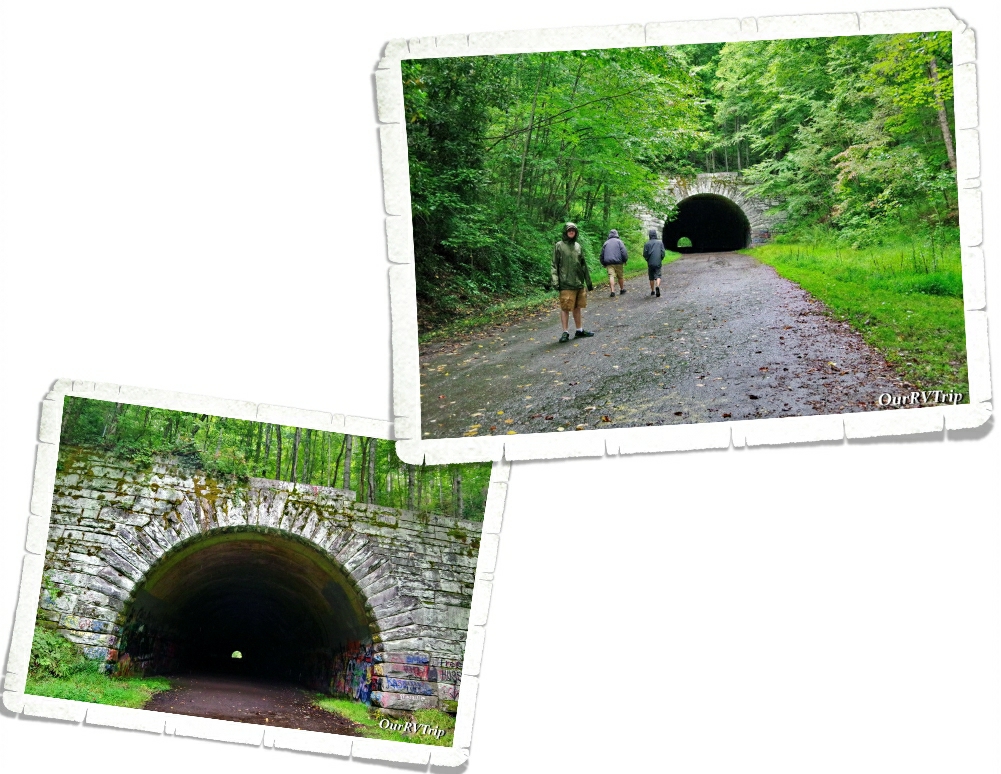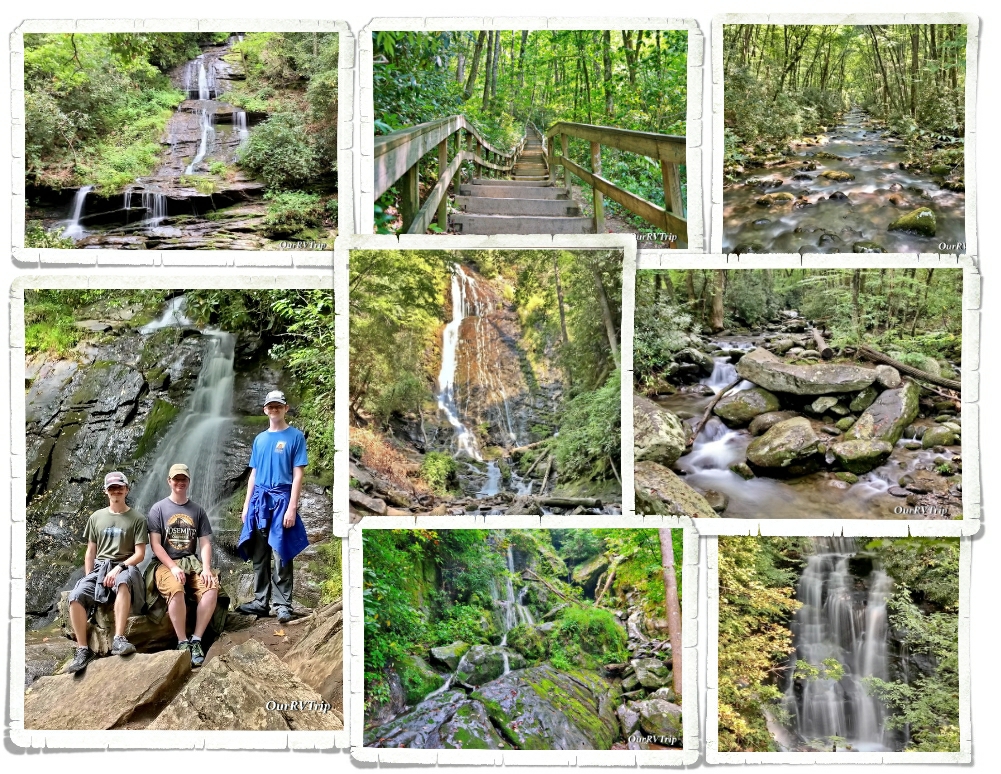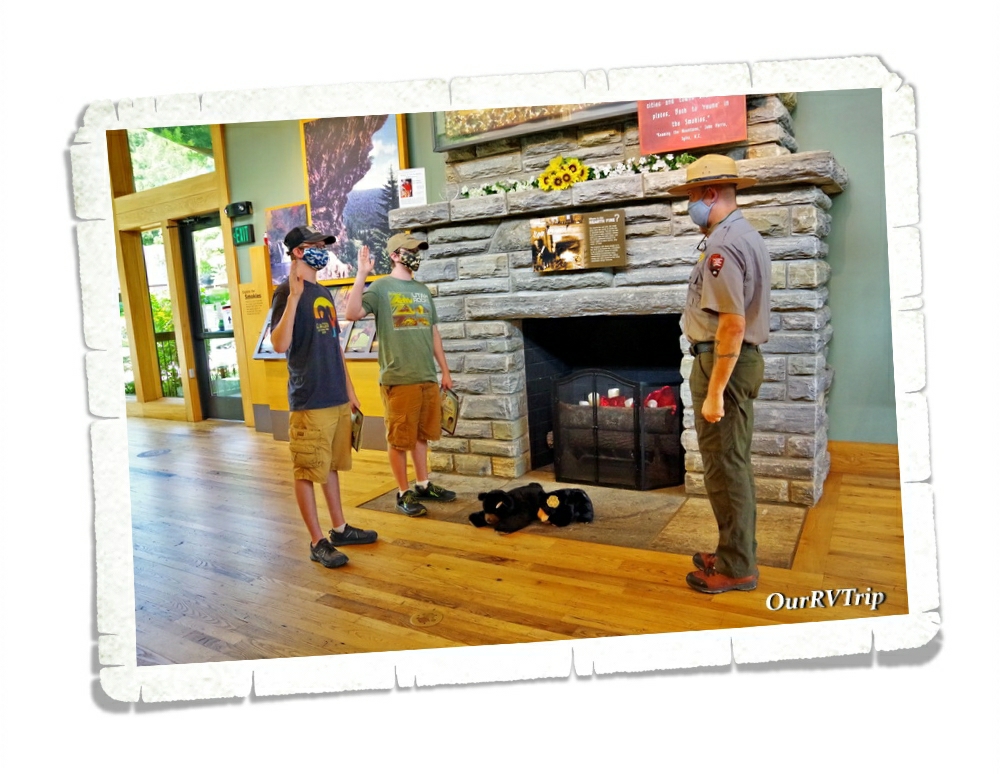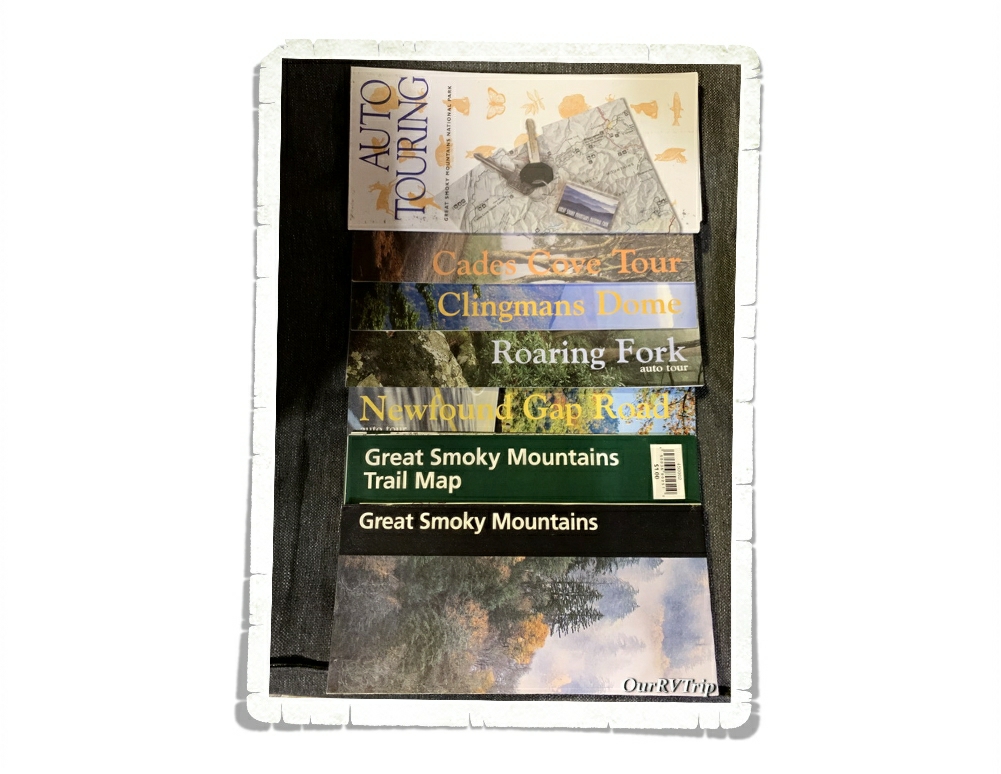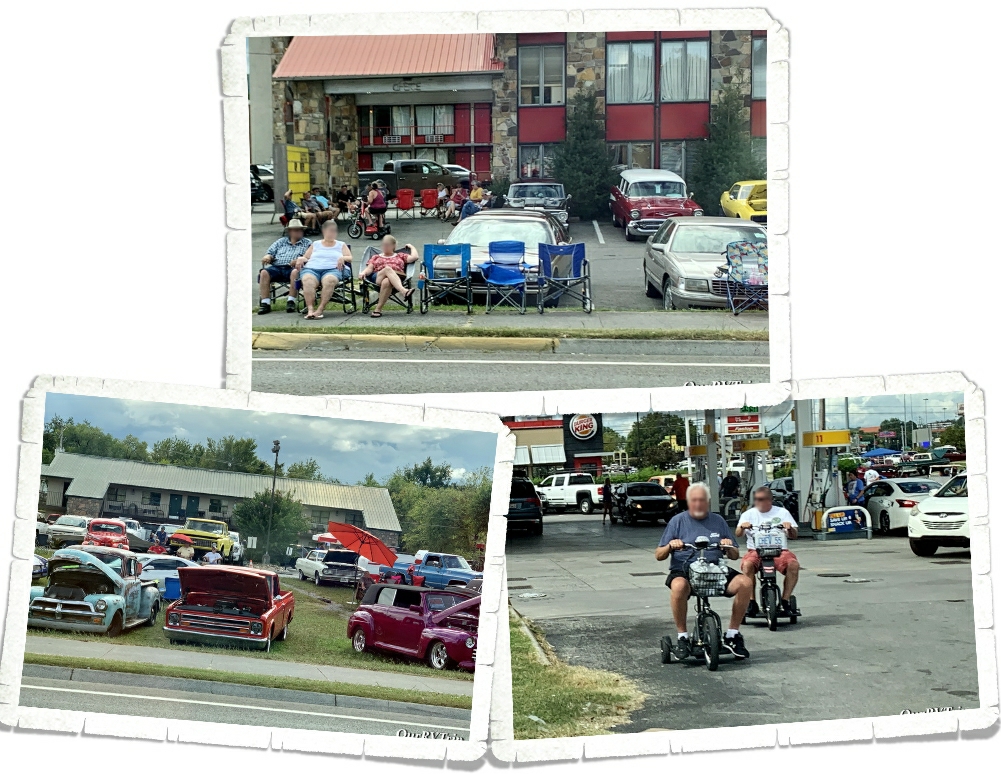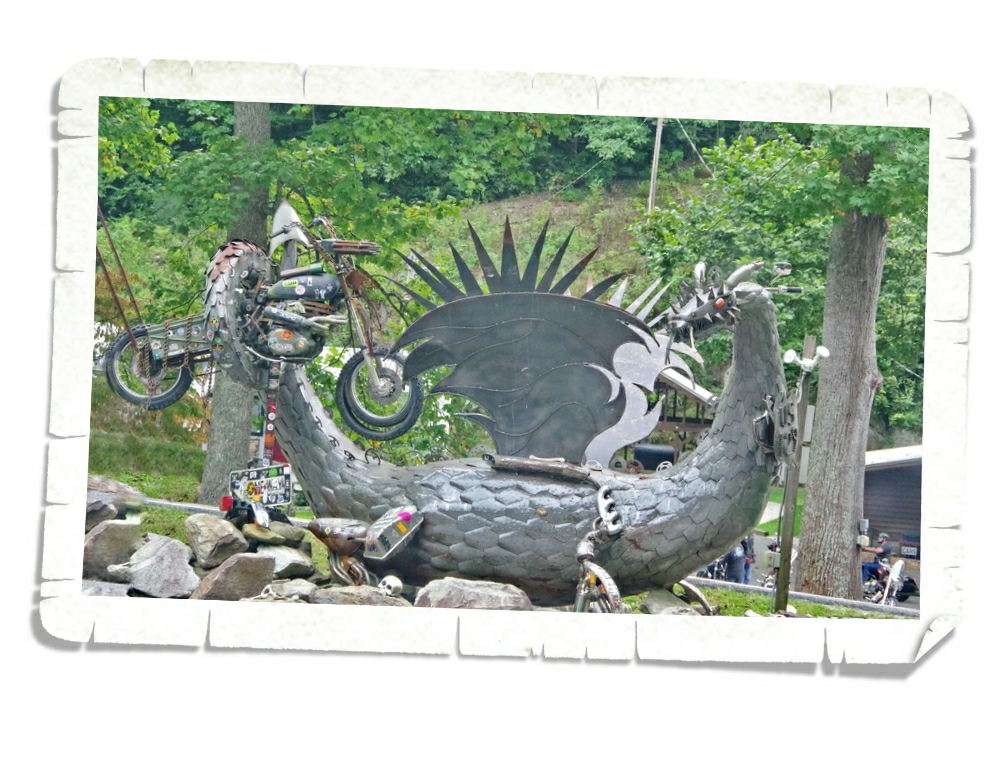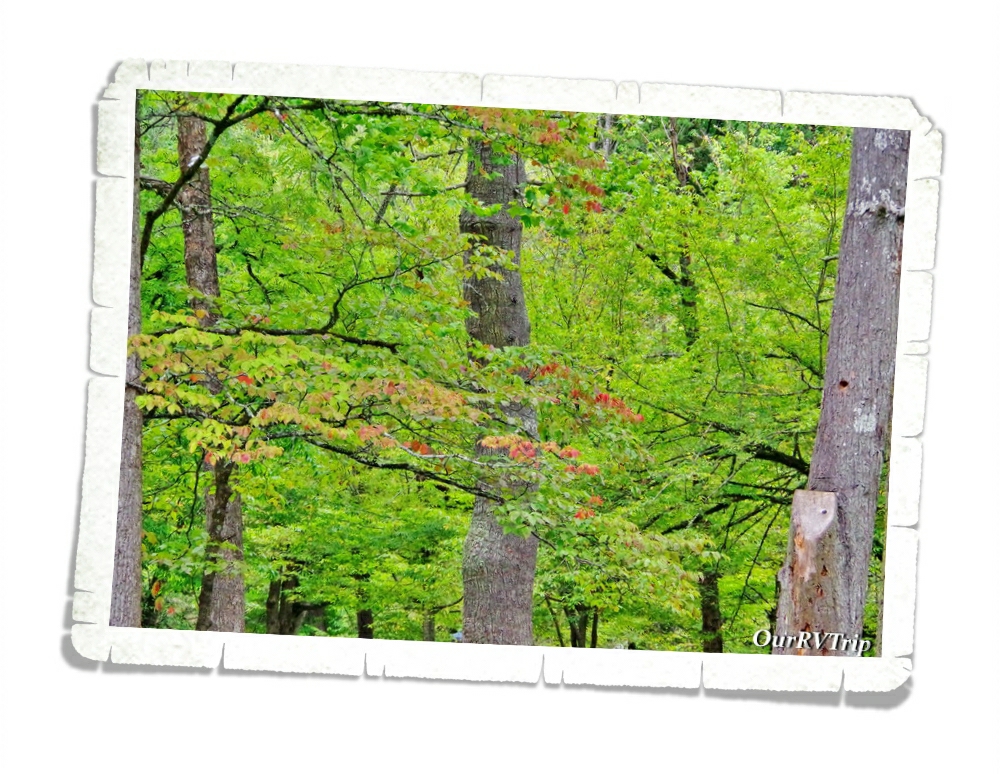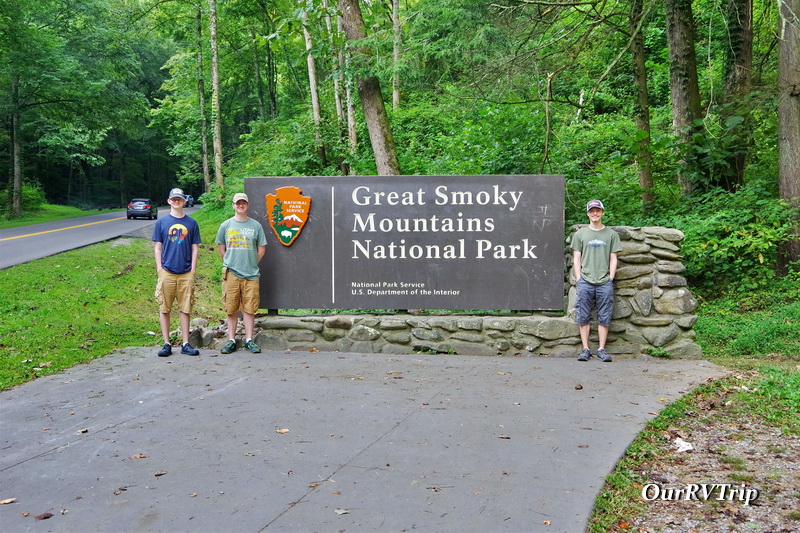
Ancient Mountains
Hey Guys! We spent two weeks in Pigeon Forge so we could explore Great Smoky Mountain National Park. It was a very busy two weeks…we did as much as we could…and we didn’t even begin to scratch the surface of what’s available to do in the area.
I’ve put off visiting this area of the country for awhile now…for various reasons. The main reason is how incredibly busy it is. Great Smoky Mountain NP is America’s most visited National Park. It’s crowded. The towns of Pigeon Forge and Gatlinburg are the two main towns people stay in when visiting and Guys, it was insanely busy. Crowds aren’t our thing. And…if I’m being completely honest…I was comparing the Smoky Mountains to the Rocky Mountains…the Smokies didn’t seem that impressive to me.
The Appalachian mountains that you find within Great Smoky Mountain NP were formed 480 million years ago while the Rockies are much younger and were formed somewhere around 285 million years ago. When the Appalachians were younger and still growing, it’s thought that they were actually bigger than the Rockies are today. We’ve come to affectionately refer to the Smoky Mountains as old man mountains. Today, the highest peak in Smokies is close to 6,600 feet and while it’s not as high as what you can find in the Rockies…the views are still impressive. The park get’s it’s name from the constant presence of fog that seems to cling to the mountains. While the fog is thinker in the mornings, it’s pretty much there all day and can make for some very interesting views.
One of the most visited places in Great Smoky Mountain NP is Clingmans Dome. I always thought Clingmans Dome was the name of the tower you can hike up for a view, but actually, a dome is what they call a rounded mountain or ridge top. Clingmans Dome stands at 6,643 feet and is the highest point in the park. The trial to get to the observation tower is only half a mile long, but it feels like you’re hiking straight up. It’s a steep trail and has zero shade so if you ever go, be prepared for that. Once you reach the top of the observation tower, you’re rewarded with a 360* view of the Smoky Mountains and if you’re there on a clear day, you can see five different states. We went on a clear day and once I caught my breath from all of the up…the view was fantastic! In the 1800s people called the peak of Clingmans Dome, Smoky Dome due to the seemingly ever present smoky effect of the fog and clouds.
You never know what you’re going to find when you head out on a trail in Great Smoky Mountain NP. We found an old CCC camp one day This particular camp was also used to house and continue some of the CCC projects by Conscientious Objectors of WWII in 1942. Franklin D. Roosevelt established the Civilian Conservation Corps (CCC) in 1933 to combat two problems in the United States… reforestation of our Nation’s timber resources due to the commercial logging and the unemployment problem during the Great Depression. The average CCC employee was unemployed and unmarried men between 18 and 22 years old. All over the Country, CCC camps were established to house, educate and feed the volunteers (where were paid $30 a month) while they built roads, trails, and buildings that we still use to this day. The National Park System benefited greatly from the CCC and the Great Smoky Mountain NP benefited more than any other park. There were 22 CCC camps that housed up to 3,000 men. The camps were abandoned a long time ago, but you can still find traces of some of them. We’re big fans of the CCC program and what it offered our people in their time of need and all of the amazing things they did for our Nation.
Mingus Mill was built in 1886 and was used to grind corn and wheat for some of the nearby communities. It was in pretty bad disrepair and restored by the CCC in 1937. Today, you can go and see how corn and wheat used to be milled. You can even buy some fresh corn meal or wheat flour from the miller that’s posted there. We enjoyed walking around the mill and chatting with the miller there. We’ve been to other mills before, but it’s always interesting to see the differences in each mill.
Before it was a National Park, it was home to thousands of people. You can see the homes and livelihoods that were left behind when the area was made into a National Park. Land was purchased as it became available and the few that didn’t want to sell their homes or leave their businesses and move were incorporated into the park but with the right to remain on their land until they died. There are cabins all throughout the park that are left over from another life. All of the ones we found were open to exploration.
Alfred Reagan was a farmer of cattle, crops, fruit and even timber. He and his wife made their life and raised their family in one of the small communities on the rocky mountainside of the Appalachian mountains. Life was hard but good. They used all three colors available from Sears Roebuck offered to paint their home. We found that it was interesting that this was the only cabin we found that was painted.
Back in the 1930s and 1940s, Swain County gave up pretty much all of it’s privately owned land to make a portion of the Great Smoky Mountain National Park and to create Fontana Lake. The lake was used to create the electricity to run the aluminum plants for the Oak Ridge Tennessee’s National Laboratory during WWII during the Manhattan Project. Hundreds of families were forced to leave the small mountain communities that had been their home for generations. With the creation of Fontana Lake homes and the old highway 288 that lead to them were all under the waters of the lake. The citizens of these small communities were all promised by the government that a new road would be made so they would continue to have access to the small cemeteries where generations of their family members were buried. For environmental and construction issues that came up during the construction…the new road was put to a stop and never finished. The “Road To Nowhere” was born. Today it’s a neat place to go for a walk. You can walk all the way through the tunnel and take one of the trails at the end. The day we went, it was raining so we didn’t do any hiking, but I’ve read that you can hike by some of the abandoned homesteads.
Water is a constant presence at Great Smoky Mountain National Park. If it’s not the rain (an average of 55 to 85 inches per year depending on where you are in the park) it’s the rivers/creeks/streams or waterfalls. It makes for a very interesting and diverse park. We had the best time chasing waterfalls of all sizes during our time exploring this NP unit! What we didn’t love…all of the up that most of those waterfalls took to see. Whoo!! So. Many. Stairs!! If waterfalls are your jam…Great Smoky Mountain NP has over 2.000 miles of waterways and over 100 waterfalls for you to explore to your heart’s content.
Great Smoky Mountains National Park was park unit 186 for us. The boys got their Junior Ranger badge and chatted with a Ranger about his time at the park. If you ever want to know an insider’s tips to a park…talk to a Ranger. In a park that is as busy as GSNP…tips about the not so popular, but just as good places can be invaluable.
Seven years ago…when we were just starting to plan out this crazy nomad life of ours…I sent off for information about attractions from several states. Tennessee sent me a ton of park brochures from Great Smoky Mountains NP. I filed them away and kept them safe until we were able to finally use them this year! We used them all in our planning and explorations. You can buy them in the park and I would highly recommend it. The little tidbits they offer about the park are great.
Apparently, there’s an event almost every weekend in Pigeon Forge. While we were there, the event was a car show and it was a full week thing. It was basically like a huge tailgating party that stretched over several blocks. Cars were out, people were out, there was food and fun and…scooters. Guys, the scooters were a spectacle all on their own. We saw so many scooters being ridden around by people. It was funny to watch the scooter trains as they wound their way through the cars and streets.
There’s a road called The Tail of the Dragon that is a huge draw for motorcycles and sports cars. It has 318 curves in 11 miles. I expected more views from this stretch of road…It was mainly just views of the road in front of us. We did see tons of motorcycles and expensive sportscars zooming around. There’s one pull off and the view wasn’t that great. I did some research and found that there are close to 100 crashes a year on this 11 mile stretch of twisty road.
Did you know there’s a Tennessee Whiskey Trail? We did the Kentucky Bourbon Trail…if you missed that post, check it out here…So, we thought we should do the TN Whiskey Trail too! In KY you got a t-shirt when you finished the trail. In TN you get a poker chip at each Distillery you visit and then when you’re done, you send off your passport and get the rest of the poker set! We did a few distilleries in the two weeks we were in Pigeon Forge. Ole Smoky was fun and we got a special t-shirt (that is super soft) for doing a tour. It’s still weird to have a kid who’s old enough to do the tastings with us now…
If you’re a foodie, you’ll have plenty to choose from between Pigeon Forge and Gatlinburg. There are tons of options. We enjoyed everything we got. It was super crowded so we didn’t go to too many places, but the spots we hit were all good. Corky’s BBQ and JT Hannah’s were our favorites.
We were in Pigeon Forge the last couple of weeks of summer so the flowers were kind of slim pickings. I did find plenty of mushrooms/fungi though! So many different shapes and colors!
There are something like 1500 bears in the Smoky Mountains. We heard from so many people that they always see bears when they go. We saw signs about bear activity but didn’t see a single bear. Not even a foot print. Due to road work, we didn’t get to go to Cades Cove, which is supposedly where a ton of bears like to stay…maybe we’ll see some next time.
That’s it Guys! We liked Great Smoky Mountains National Park a lot more than we thought we would and we will definitely go back and do some more exploring…soon! When we left the leaves were just starting to hint at changing colors. I’d love to go back during prime fall colors!
See y’all down the road!
#NationalParkTour


